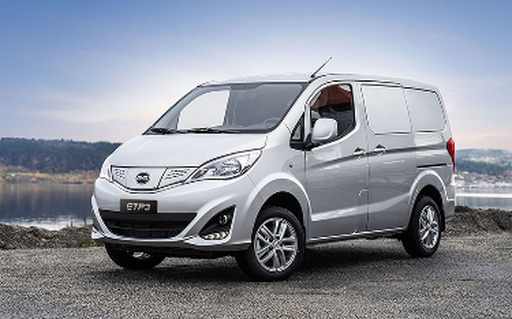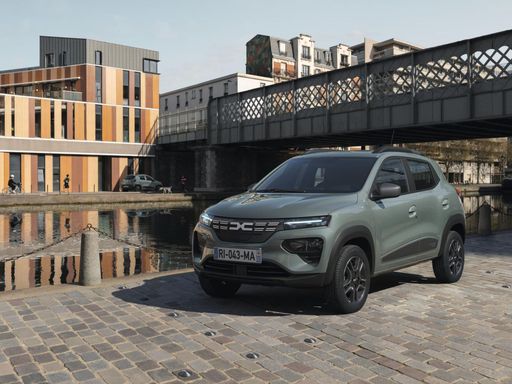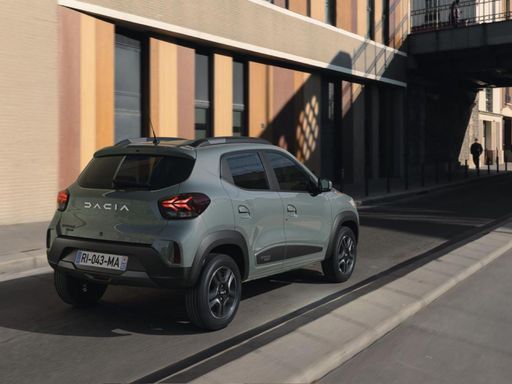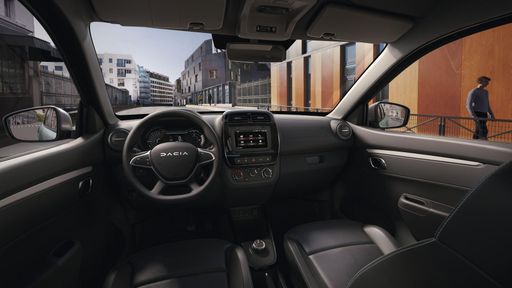BYD ETP3 vs Dacia Spring – Differences & prices compared
Two cars, one duel: BYD ETP3 meets Dacia Spring.
Which one wins in performance, efficiency and value for money? Find out now!
Costs and Efficiency:
When it comes to price and running costs, the biggest differences usually appear. This is often where you see which car fits your budget better in the long run.
Dacia Spring has a significantly advantage in terms of price – it starts at 14500 £, while the BYD ETP3 costs 31600 £. That’s a price difference of around 17135 £.
As for range, the BYD ETP3 performs minimal better – achieving up to 233 km, about 5 km more than the Dacia Spring.
Engine and Performance:
Power, torque and acceleration are the classic benchmarks for car enthusiasts – and here, some clear differences start to show.
When it comes to engine power, the BYD ETP3 has a clearly edge – offering 136 HP compared to 65 HP. That’s roughly 71 HP more horsepower.
In terms of top speed, the Dacia Spring performs to a small extent better – reaching 125 km/h, while the BYD ETP3 tops out at 100 km/h. The difference is around 25 km/h.
There’s also a difference in torque: BYD ETP3 pulls noticeable stronger with 180 Nm compared to 125 Nm. That’s about 55 Nm difference.
Space and Everyday Use:
Beyond pure performance, interior space and usability matter most in daily life. This is where you see which car is more practical and versatile.
Seats: Dacia Spring offers clearly more seating capacity – 4 vs 2.
In curb weight, Dacia Spring is significantly lighter – 1013 kg compared to 1640 kg. The difference is around 627 kg.
In maximum load capacity, the BYD ETP3 performs clearly better – up to 3500 L, which is about 2496 L more than the Dacia Spring.
When it comes to payload, BYD ETP3 significantly takes the win – 780 kg compared to 302 kg. That’s a difference of about 478 kg.
Who wins the race?
The BYD ETP3 proves to be edges out slightly and therefore becomes our DriveDuel Champion!
BYD ETP3 is the better all-rounder in this comparison.
 @ BYD Auto / BYD Global Media
@ BYD Auto / BYD Global Media
BYD ETP3
BYD ETP3
The BYD ETP3 is a versatile electric van that seamlessly blends functionality with environmental consciousness. Its modern design is complemented by a spacious interior, making it ideal for both urban deliveries and day-to-day personal use. Advanced technology features ensure a smooth and efficient driving experience, setting a new standard in the electric vehicle market.
details @ BYD Auto / BYD Global Media
@ BYD Auto / BYD Global Media
Dacia Spring
The Dacia Spring stands out as an affordable and environmentally friendly option in the electric vehicle market, combining practicality with a compact design ideal for urban settings. Its minimalist interior, while basic, provides all the essential features needed for a comfortable drive, reflecting its cost-effective approach. The vehicle's performance suits city driving, making it an appealing choice for those seeking an entry-level electric car.
details @ Dacia / Renault Group Media
@ Dacia / Renault Group Media
 @ Dacia / Renault Group Media
@ Dacia / Renault Group Media
 @ Dacia / Renault Group Media
@ Dacia / Renault Group Media
 @ BYD Auto / BYD Global Media
@ BYD Auto / BYD Global Media
|
 @ Dacia / Renault Group Media
@ Dacia / Renault Group Media
|
|
|
|
Costs and Consumption |
|
|---|---|
|
Price
31600 £
|
Price
14500 - 17100 £
|
|
Consumption L/100km
-
|
Consumption L/100km
-
|
|
Consumption kWh/100km
-
|
Consumption kWh/100km
13.2 - 14.1 kWh
|
|
Electric Range
233 km
|
Electric Range
225 - 228 km
|
|
Battery Capacity
-
|
Battery Capacity
26.80 kWh
|
|
co2
0 g/km
|
co2
0 g/km
|
|
Fuel tank capacity
-
|
Fuel tank capacity
-
|
Dimensions and Body |
|
|---|---|
|
Body Type
Cargo Van
|
Body Type
SUV
|
|
Seats
2
|
Seats
4
|
|
Doors
5
|
Doors
5
|
|
Curb weight
1640 kg
|
Curb weight
1013 - 1050 kg
|
|
Trunk capacity
-
|
Trunk capacity
308 L
|
|
Length
4460 mm
|
Length
3701 mm
|
|
Width
1720 mm
|
Width
1583 mm
|
|
Height
1875 mm
|
Height
1519 mm
|
|
Max trunk capacity
3500 L
|
Max trunk capacity
1004 L
|
|
Payload
780 kg
|
Payload
265 - 302 kg
|
Engine and Performance |
|
|---|---|
|
Engine Type
Electric
|
Engine Type
Electric
|
|
Transmission
Automatic
|
Transmission
Automatic
|
|
Transmission Detail
-
|
Transmission Detail
Reduction Gearbox
|
|
Drive Type
Rear-Wheel Drive
|
Drive Type
Front-Wheel Drive
|
|
Power HP
136 HP
|
Power HP
44 - 65 HP
|
|
Acceleration 0-100km/h
-
|
Acceleration 0-100km/h
13.7 - 19.1 s
|
|
Max Speed
100 km/h
|
Max Speed
125 km/h
|
|
Torque
180 Nm
|
Torque
113 - 125 Nm
|
|
Number of Cylinders
-
|
Number of Cylinders
-
|
|
Power kW
100 kW
|
Power kW
33 - 48 kW
|
|
Engine capacity
-
|
Engine capacity
-
|
General |
|
|---|---|
|
Model Year
2023
|
Model Year
2024
|
|
CO2 Efficiency Class
A
|
CO2 Efficiency Class
A
|
|
Brand
BYD
|
Brand
Dacia
|
What drive types are available for the BYD ETP3?
The BYD ETP3 is offered with Rear-Wheel Drive.
The prices and data displayed are estimates based on German list prices and may vary by country. This information is not legally binding.
